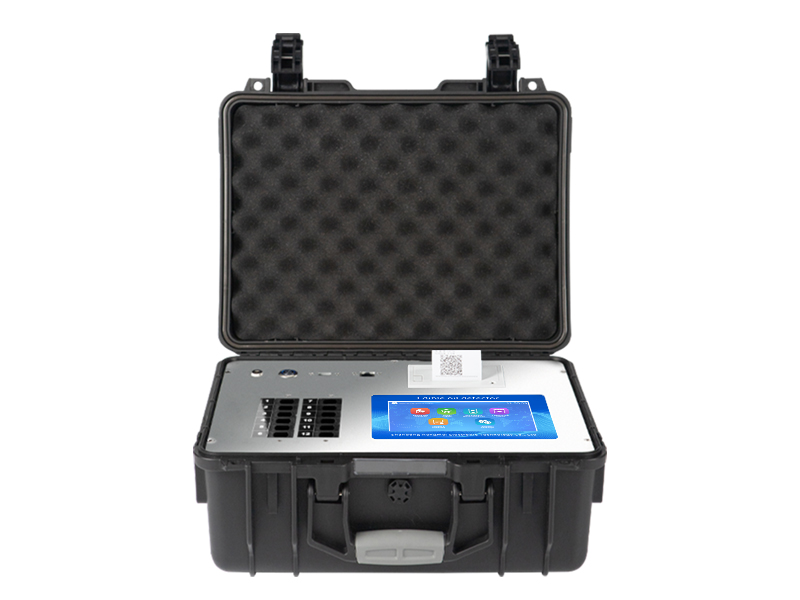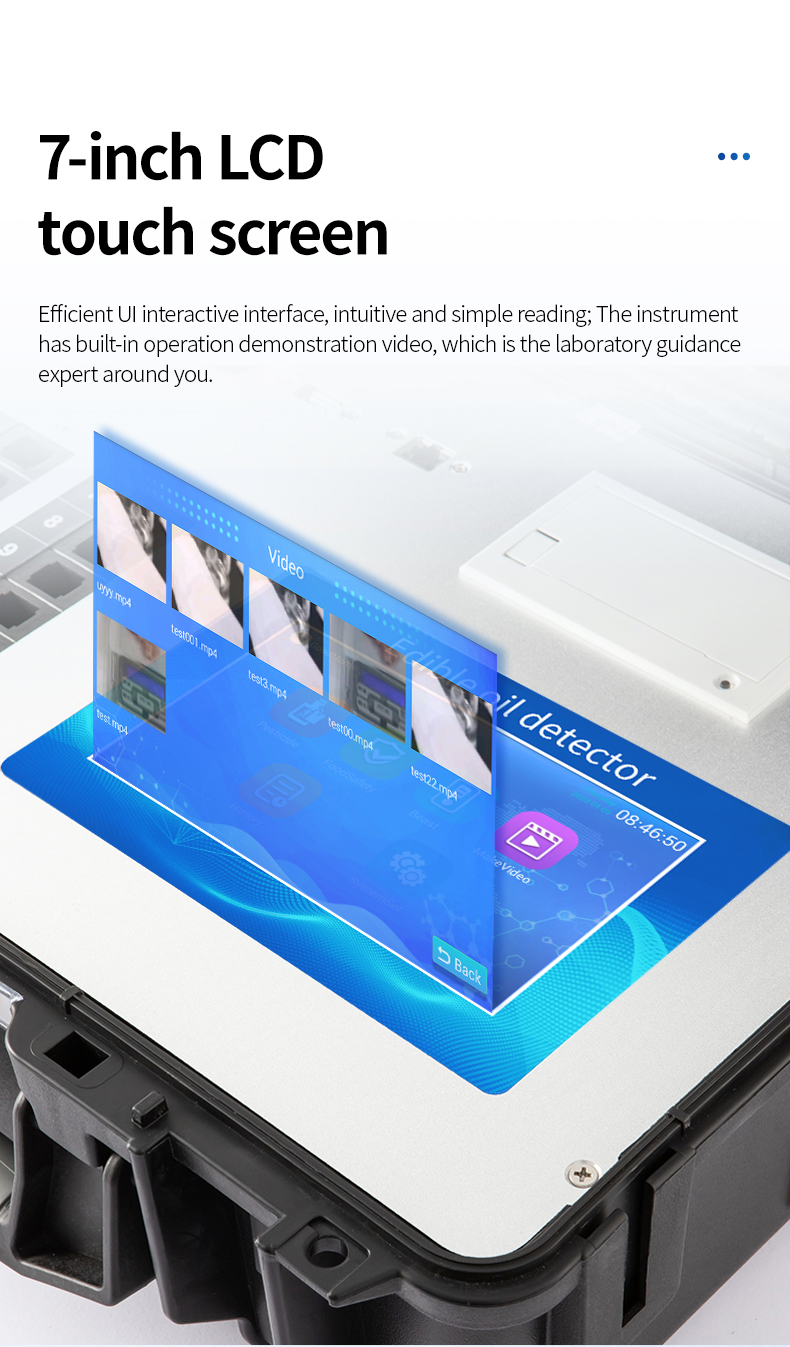In today's increasingly concerned food safety issues, edible oil, as an indispensable basic ingredient in people's daily diet, directly affects public health in terms of its quality and safety. To address the pain points of low efficiency, high cost, and data lag in traditional detection methods, edible oil detectors have become an indispensable "safety sentinel" in the food industry chain due to their intelligence, high precision, and multi scenario adaptability. This article will analyze how this technological tool can reshape the quality control system of edible oil from three aspects: technical principles, core advantages, and industry applications.

Technological Innovation: Precise Testing from Laboratory to Site
The core technology of the edible oil detector integrates advanced methods such as photoelectric colorimetry and colloidal gold immunochromatography, achieving rapid identification and quantitative analysis of multiple key indicators
Acid value and peroxide value: Through the photoelectric colorimetric module, detection can be completed within 10 minutes, accurately determining the degree of oxidation and the risk of rancidity of oils and fats;
Aflatoxin and benzo [a] pyrene: using colloidal gold immunochromatography technology and antigen antibody specific reaction, harmful substances at ppb level (one billionth) can be detected, with sensitivity increased by a hundred times compared to traditional methods;
Heavy metals and pesticide residues: Combined with electrochemical sensors, trace detection of pollutants such as lead, cadmium, and organic phosphorus can be achieved to ensure the purity of edible oil.
These technological breakthroughs not only significantly shorten the testing time (traditional laboratory testing takes 3-5 days, on-site testing only takes 10-30 minutes), but also significantly reduce testing costs, providing efficient and economical solutions for the entire industry chain.

Core advantage: Multi dimensional empowerment of food safety ecology
The innovative design of the edible oil detector demonstrates multiple values in food safety management:
1. Full link coverage
Source control: Food production enterprises can deploy detection devices in the raw material acceptance stage to screen high-quality oil sources in real time, avoiding the flow of inferior raw materials into the production line;
Process monitoring: The embedded detection module in the production line can dynamically monitor the quality of oil and fat, timely detect process abnormalities, and ensure that the finished product meets national standards;
Terminal screening: Catering enterprises and supermarkets can quickly screen bulk oil products through portable devices, eliminating hidden dangers such as gutter oil and repeated use of oil.
2. Intelligent upgrade
Built in Android system and IoT module, supporting real-time data upload to the regulatory platform, achieving closed-loop management of "detection warning traceability". For example, a provincial food and drug supervision bureau completed 2000 batches of testing within 2 weeks during the "special rectification action" and found 47 batches of unqualified products, resulting in an 80% increase in administrative penalty efficiency.
3. Low cost and high efficiency
Compared to traditional laboratory testing (with a single cost of 500-1000 yuan), edible oil testing equipment has strong compatibility with consumables, and the cost of a single test can be compressed to below 20 yuan. A large grain and oil group has achieved an annual quality loss of over 5 million yuan by deploying detection equipment.

Industry application: value verification from laboratory to market
Edible oil detectors have been widely used in the food industry, regulatory enforcement, and consumer terminals, becoming a key tool to promote the standardized development of the industry
In the field of government regulation, market supervision departments can use it to conduct surprise inspections of agricultural markets and small workshops. For example, the market supervision bureau of a certain city identified three illegal oil refining sites through rapid detection of aflatoxin, and seized 2 tons of gutter oil raw materials on site, effectively curbing illegal activities.
Food production enterprise: After deploying detection equipment on the production line, a certain edible oil processing plant reduced the return rate of raw materials with excessive acid value from 15% to 3%, and the product sampling pass rate increased to 99.8%.
Catering and distribution links: Chain catering enterprises use central kitchens equipped with detection devices to achieve "inspection before use" for purchasing oil products, reducing the risk of gutter oil by more than 90%; Large supermarkets use it to quickly screen incoming oil products and intercept over a thousand cases of unqualified products.

The edible oil detector is not only an innovation in technical tools, but also an upgrade in the concept of food safety management. It has built a solid defense line from farmland to dining tables through scientific means, provided data support for government regulation, injected power into reducing costs and increasing efficiency for enterprises, and safeguarded the "safety on the tip of the tongue" for consumers. Under the dual drive of policy promotion and market demand, this technology is accelerating its popularization and becoming the core engine for the high-quality development of the food industry.
Address of this article:http://www.hmfoodtesting.com/article/28.html


 Current
location:
Current
location:





